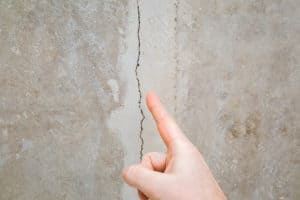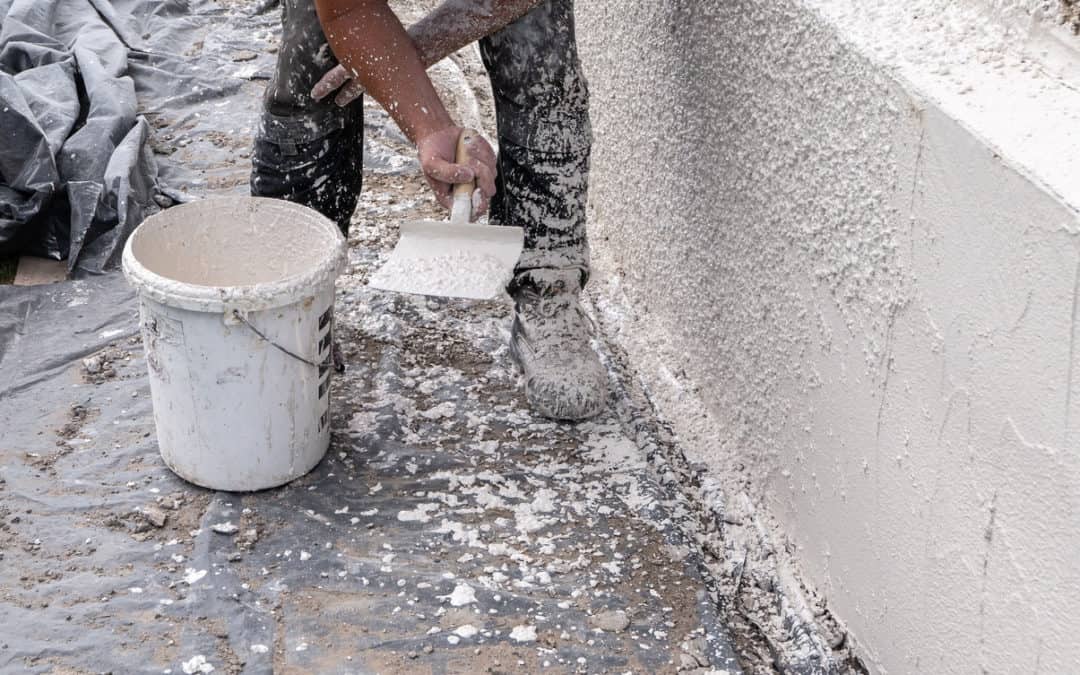Stucco is a traditional exterior finish used over brick, concrete blocks, and wood surfaces. This type of stucco is composed of Portland cement, sand, and water with either fibreglass mesh or paper as reinforcement for the surface lath before applying a final coat.
When doing stucco repairs, first perform all necessary safety precautions such as protecting surrounding plants, shrubs, and grass, using protective clothing including long sleeves, safety glasses, gloves, and a respirator. Wearing boots or shoes with closed toes is also advisable.
Before getting started on your stucco repairs, try to determine what caused the damage. The most common reasons for stucco wall failure are water entry, lack of expansion space, and poor design and installation.

Your Guide to All Types of Stucco Repairs
Stucco Crack Repairs – First, clean out cracks with a stiff brush or broom to remove any loose or soft material on the surface.
Next, use an exterior grade acrylic wall paint applied with a putty knife on any hairline cracks that are open to the surface of the stucco. This will help to seal the crack and keep out moisture.
For larger cracks, you will need to use a stucco patching compound. Be sure to read the manufacturer’s instructions carefully, as some products require a primer coat before application.
After the patching compound has dried, use sandpaper or grinder to smooth out the surface, feathering out toward the undamaged area.
Stucco Crack Sealing – Finally, clean the surface of any dirt or foreign material and allow it to completely dry.
Next, apply an exterior silicone or latex caulk around the entire cracked area. To avoid over-applying over the patch, use a plastic squeeze bottle. The idea is to form a water-tight seal that will keep the elements out.
If you notice any stucco deterioration around windows, doors, or other openings, be sure to repair and seal these areas as well.
Stucco Erosion Repair – If you have stucco erosion, it’s best to call in a professional. They will be able to determine the extent of the damage and what needs to be done to fix it.
In some cases, a simple patch may be all that’s needed. However, if a significant portion of the stucco has been lost, the affected area may require a complete re-stuccoing.
Stucco Surface Preparation – Before you begin the stucco repair, it is imperative that you ensure there has been adequate weathering of the plaster. Lay on your back and look up at the wall, checking if this area has endured four or more freeze-thaw cycles in one year. If not, then you will need to wait until it can weather properly.
Once you have determined that it is safe to proceed, use a wire brush to remove any loose paint, dirt, or debris from the surface. Be sure to wear gloves and a respirator when doing this.
Then use a pressure washer with a 2500 psi setting to clean the entire area. This will help the patching compound adhere better.
Allow the surface to dry completely before proceeding.
Stucco Application – If you are doing a small repair, use a putty knife to apply the stucco patching compound to the area.
For larger repairs, it is best to use a hawk and trowel. Be sure to spread the compound evenly across the entire surface, feathering out toward the entire area.
Once you have applied sufficient compound to cover the damaged area, use a push broom to work it into the grooves of the stucco, evening out any low spots. Use this same technique when applying your topcoat stucco finish. If using concrete mesh for reinforcement, staple it to the wall before applying your stucco. Be sure to follow the manufacturer’s instructions for the proper application and spacing of the mesh.
Stucco Top Coat – Finally, allow all compound layers to dry before proceeding to the next step thoroughly. After they are dry, apply a topcoat with a concrete stain that is compatible with the colour of your stucco finish.
Be sure to use a brush or roller and apply even pressure to achieve a smooth finish.
This is an overview of the steps involved in repairing stucco walls. For more specific instructions, please refer to the manufacturer’s instructions for the product you are using. It is always best to consult with a professional before starting any major repairs.

Recent Comments